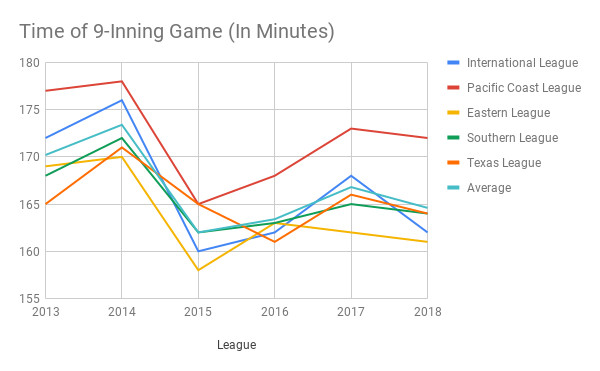Extra-Inning Pace Of Play Rule Slashed MiLB Game Times In 2018


Image credit: (Photo by JJ Cooper)
When Minor League Baseball adopted rules designed to speed up extra innings across the minor leagues this season, their hope was it would shorten game times significantly while avoiding fan backlash.
On the first point, MiLB definitely succeeded. On the second point, the jury is still out.
Shortening extra-inning games was something major league teams wanted for their minor leaguers because it lessened the number of unexpected innings bullpens would have to fill. It was also something many minor league operators wanted because four-hour games mean extra expenses paying staff while many fans have already left for the exits.
Thanks to rules that places a runner on second base at the start of every extra inning, minor league baseball’s extra-inning games took on average 16 minutes less to play in 2018 than in 2017. Where the average extra-inning game took 3:32 minutes in 2017, an average extra-inning game took only 3:16 minutes in 2018.

“I’m happy to report at least in the first go-around (we) accomplished what we wanted it to,” Minor League Baseball President Pat O’Conner said. “I think that clearly demonstrates, especially with the extra-inning rule, it accomplished what we wanted it to accomplish. There were 1,000 less innings in extra innings. It opened to some critical fanfare, but as time went on, I know the players and the operators learned to like it a lot. I think the fans can appreciate what we did,”
The 2018 season was also a successful one for MiLB as far as accomplishing their pace of play goals. O’Conner has described the sweet spot for a minor league game as one that takes between 2:30 and 2:45. Minor League Baseball adopted pitch clocks and began strictly enforcing the time between innings after Double-A and Triple-A leagues averaged 2:53 per regulation nine-inning game in 2014. The time of game dropped by 11 minutes for the Double-A and Triple-A leagues in 2015 and by six minutes across the majors.

But since then, there had been a steady lengthening of the average game time again. This year marks the first time the average game time has decreased compared to the previous season.
The average nine-inning game across the minors was played in 2:48 in 2018, down slightly from 2:49 in 2017. More dramatically, games at Double-A and Triple-A (where the pitch clock is implemented) averaged 2:45 this year, down two minutes a game from last year.
Before pitch clocks were installed, Double-A and Triple-A games were traditionally longer than games in the lower levels of the minors. Since pitch clocks have been installed, Double-A and Triple-A games are now shorter than games in the lower minors.

Comments are closed.